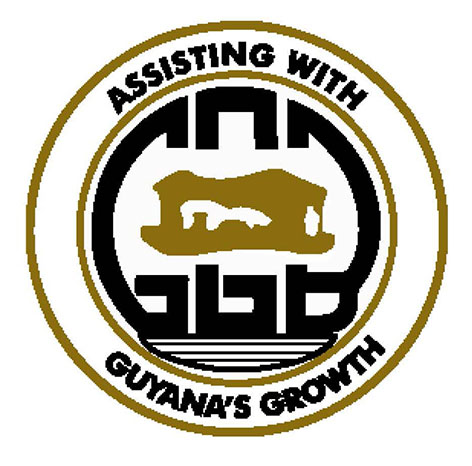The Guyana Gold Board does NOT use mercury in any of its processes or operations. Not before, not now, and not in the future.
As should be widely known by now, mercury has been a longstanding contributor in the activities of miners exploring for gold in the hinterlands of this country. Mercury is used by mainly subsistence (pork-knockers) miners and small-to-medium scale miners for purposes of: a) separating the gold when found in its natural state from surrounding materials, such as mud, sand and other nonmetallic elements; and b) amalgamating (bonding) the then separated particles of gold into a more uniform whole that is almost purely gold. This is the gold that is declared and presented for sale to the Gold Board. It must be noted that this gold presented by miners is either in the form of smelted or un-smelted gold. Smelted gold means that almost all of the mercury used in the extraction process was removed at the site of discovery or elsewhere; but not at the Gold Board. When such metal is offered for sale to the Gold Board, as it must be by law, it is subjected to a laboratory process to determine authenticity and the degree of purity. Mercury emissions from smelted gold are near zero to nonexistent.
On the other hand, some un-smelted gold inevitably makes its way to the Gold Board for sale. This gold would not have undergone any burning (smelting or purifying) process in the interior. This smelting process occurs in the Laboratory of the Gold Board. Varying levels of mercury are released in the burning process under which the metal is placed. Over the years, the Gold Board has employed a “scrubber” system that sought to reduce significantly related mercury emissions. This filtering system was largely successful up to the time that reports of leaks surfaced, at which point the Hon. Minister of Natural Resources ordered the cessation of burning operations at the Brickdam facility. This decision was made despite gold contributing some 61% of the foreign exchange earned by this country, and the mining sector functioning as a significant employer. Worker, as well as public health and safety considerations, came first then, as they do now.
It is these same sensitive health and safety concerns that continue to dictate decisions being made at the Gold Board. A completely new mercury emissions control system has been constructed from scratch, with several layers of filtering mechanisms designed to trap, contain, and neutralize mercury emissions well within recommended safety levels. This system of checks and balances will be further enhanced by continuous monitoring through strategically placed sensors; emissions data logging, supervision, and audit review; and periodic employee and perimeter testing. This is in addition to the wearing of prescribed protective gear; strict adherence to procedural requirements and severe sanctions for failure to follow.
A PAHO/WHO team invited by the Ministers of Public Health, Natural Resources, and Social Protection visited the Crown Street location of the Gold Board, inspected the system, and met with the technical team to discuss the features of this emissions control system. The PAHO/WHO team, which included a medical doctor and an Industrial Hygienist, among others, has reported favourably on what they saw, heard, and learned. Recommendations from PAHO/WHO (and from any other official source) will be reviewed by the board of directors and management with a view to early implementation. To emphasize, health and safety are of the highest priority; no effort nor expense will be spared to get this right and from the inception.
In addition to the PAHO/WHO recommendations, Gold Board officials have engaged the Environmental Protection Agency (EPA), the Chair of the National Advisory Board on Occupational Safety and Health, the Ministries of Public Health and Social Protection, as well as the insights of the head of the local Conservation International. Both the board of directors and management foresee much benefit from ongoing advisory relationships with some of these entities. Plans are in train to reach some more and soon with members of the community to increase awareness as to the work of the Gold Board and the precautions being taken. As an indication of its seriousness and determination to operate ethically and credibly, the Gold Board will not buy any un-smelted gold until such time that it receives required guarantees from its contracted technical personnel that the new system can manage emissions to the safety levels that are absolutely necessary.
Separately, but on a related note, Policy Forum Guyana (PFG) made a contribution in an article titled, “Sustained mercury eradication campaign needed” (SN June 7, 2018). The PFG is described as a network of civil society organisations focused primarily on transparency and accountability in natural resources, among other things. The thoughts and calls of the PFG, as expressed in the Stabroek News article were both timely and pointed. To wit, that mercury’s presence in the capital city, especially through multiple burning enterprises (all unmonitored) must be addressed and managed; and the widespread use of mercury in mining sector operations must be phased out and eliminated in its entirety. The positions of the PFG align closely with the thinking of the Gold Board, and effectively supports President Granger’s signature on behalf of the Government of Guyana at the Minamata Convention. Incidentally, during a tour of the Crown Street location on July 20, Minister Raphael Trotman shared with the assembled press corps that he had just denied an import license application for some 30,000 kilograms of mercury from Mexico.
Meanwhile, the Guyana Gold and Diamond Miners Association (GGDMA) has signaled that it is open to discussions aimed at eliminating the use of mercury in mining operations by its members. It is, however, committed to doing so contingent upon the government’s provision of a viable economic alternative to replace the use of mercury. All of this is comforting, as reports continue to trickle in of concerns in the yachting business, and from different areas in the hinterlands populated by indigenous communities. As always, the anxieties are over health, safety, and quality of life issues.
Through all of this, the Gold Board has an obligation to fulfill its legal mandate to buy all gold presented to be sold. Gold Board directors and management have been responsive and welcoming to input from all local and foreign sources. It has cooperated and overseen without interfering. The board and management are committed to doing the right thing in word and deed, through handling its gold buying responsibilities in a safe, healthy, and confidence enhancing manner. On this there will be no compromise.









